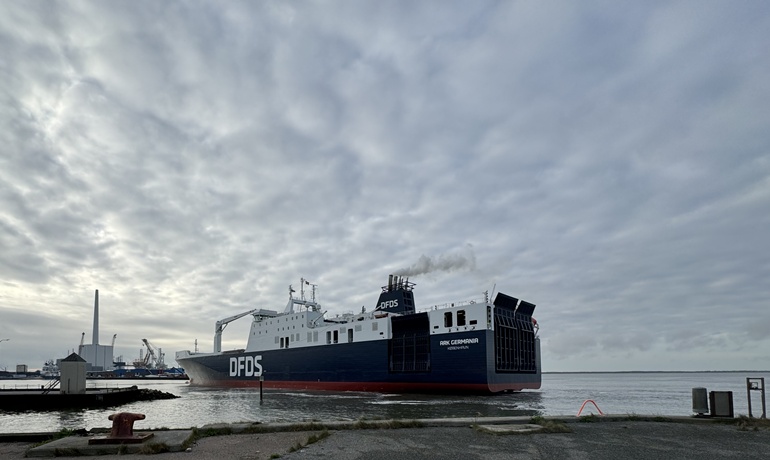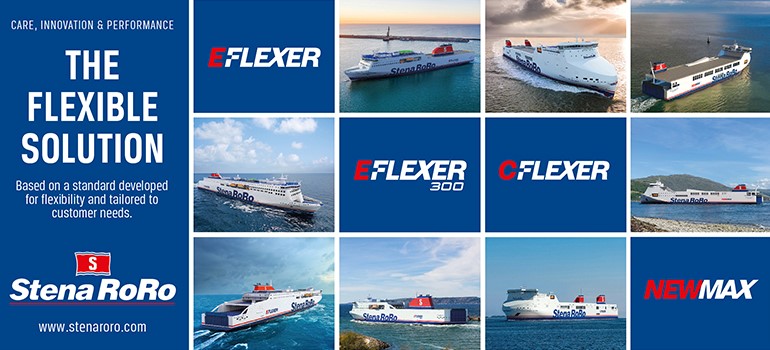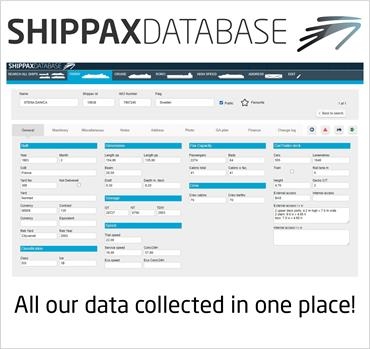
DFDS Celebrates 150 Years of Maritime Connection of The Esbjerg–UK Route
DFDS marks the 150th anniversary of the iconic Esbjerg–UK route, a vital freight corridor that has connected Denmark and the United Kingdom since the inaugural voyage in 1875. Each year the route handles more than 100.000 single trailers - equivalent to 1.5 million lane metres of cargo - making it an important freight link in Northern Europe.
While passenger services operated from 1925 to 2014, freight has always been the backbone of the route. In the early days, ships carried live cattle; by the 20th century, they transported bacon, butter, eggs, and other staples of Danish export.
“We are proud to be part of a legacy that spans a century and a half. The Esbjerg-UK route has stood the test of time, and today it is a reliable freight corridor that remains a symbol of enduring partnership between Denmark and the UK. The UK is one of the largest export markets for Denmark, and we have been supporting trade for generations and will continue to do so,” says Torben Carlsen, CEO of DFDS.
As DFDS celebrates this historic milestone, the company is also looking to the future, helping customers adapt to evolving trade dynamics – from Brexit to the recent reset of trade ties between the UK and EU.
“In a world where trade routes and alliances are constantly evolving, our role is to provide stability and keeping goods and our customers moving forward. The Esbjerg–UK route has weathered political shifts, regulatory changes, and economic headwinds, and remains a reliable bridge between Denmark and the UK,” says Torben Carlsen.
Today, two vessels—the ARK DANIA and ARK GERMANIA—operate on the route between Esbjerg and Immingham, offering?six weekly departures?and a sailing time of approximately?18.5 hours.
The route is one of 17 dedicated freight routes and 13 combined freight and passenger routes connecting continental Europe, the UK and Ireland, Türkiye and North Africa in DFDS’s ferry network.
The history of the route: significant developments over the years
- 1875-1896: the beginning
The route was inaugurated just one year after Esbjerg Harbour opened. The first ship, the paddle steamer RIBERHUUS, carried live cattle to Thameshaven. - 1896-1925: steamers and refrigeration
By 1880, the route shifted to Harwich, offering better rail access to London. Over the next decades, DFDS modernised its fleet. In 1896, screw steamers like PRIMULA, FICARIA and N-J FJORD replaced the older vessels, and refrigeration technology allowed for the export of processed goods—bacon, eggs, and dairy—ushering in a new era of Danish exports. - 1925-1945: diesel power and wartime disruption
PARKESTON, launched in 1925, was DFDS’s first diesel ship, cutting crossing times and increasing reliability. It was followed by three sister ships JYLLAND, ESBJERG, and ENGLAND, serving both passengers and freight. World War II disrupted operations. Ships were seized or sunk, and the route was suspended. Only PARKESTON survived. - 1946-1959: rebuilding
Post-war, DFDS was rebuilding. The vessel KRONPRINS FREDERIK, disassembled and hidden during the war, was finalised and became the first Danish ship with radar. It was joined by KRONPRINSESSE INGRID in 1949, and by the early 1950s, DFDS had fully transitioned to motor ships. - 1960s: the automobile era had begun
As more people wanted to bring their vehicles across the North Sea, DFDS adapted. Initially, cars were hoisted aboard with cranes. Only 25–30 vehicles could be carried at a time. In 1964, DFDS introduced the ship England, featuring side ports and a drive-through car deck - a major leap forward in convenience and efficiency. In 1967, the WINSTON CHURCHILL was launched, further improving loading operations with a floating pontoon system. It could even carry buses and trailers, including forklift-loaded bacon and butter shipments. - 1970’s and 1980’s: expansion and innovation
In the 1970s and 1980s, DFDS expanded further. DANA REGINA and later DANA ANGLIA served the Harwich route, while freight-only services to Grimsby and later Immingham were introduced. The MS SOMERSET (1966) marked the arrival of the first ro-ro vessel on the route. - 1990s–2014: the final passenger years
By the 1990s, passenger numbers were declining. SIRENA SEAWAYS was the last passenger ship to sail on the route, sailing until 2014. But freight transport continued - and still does.
Jun 25 2025


















